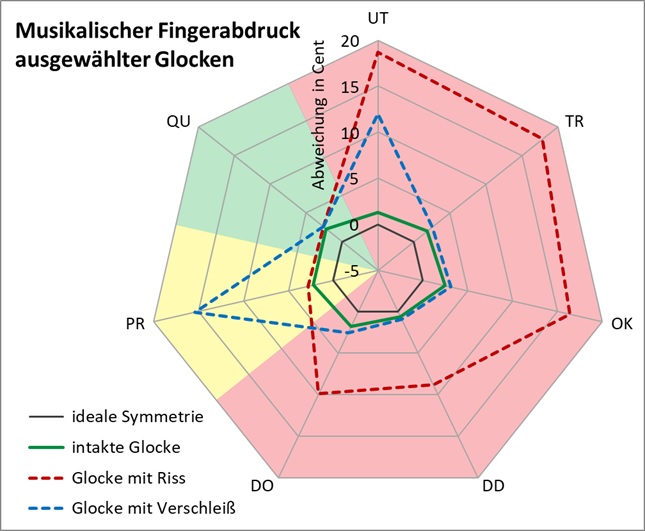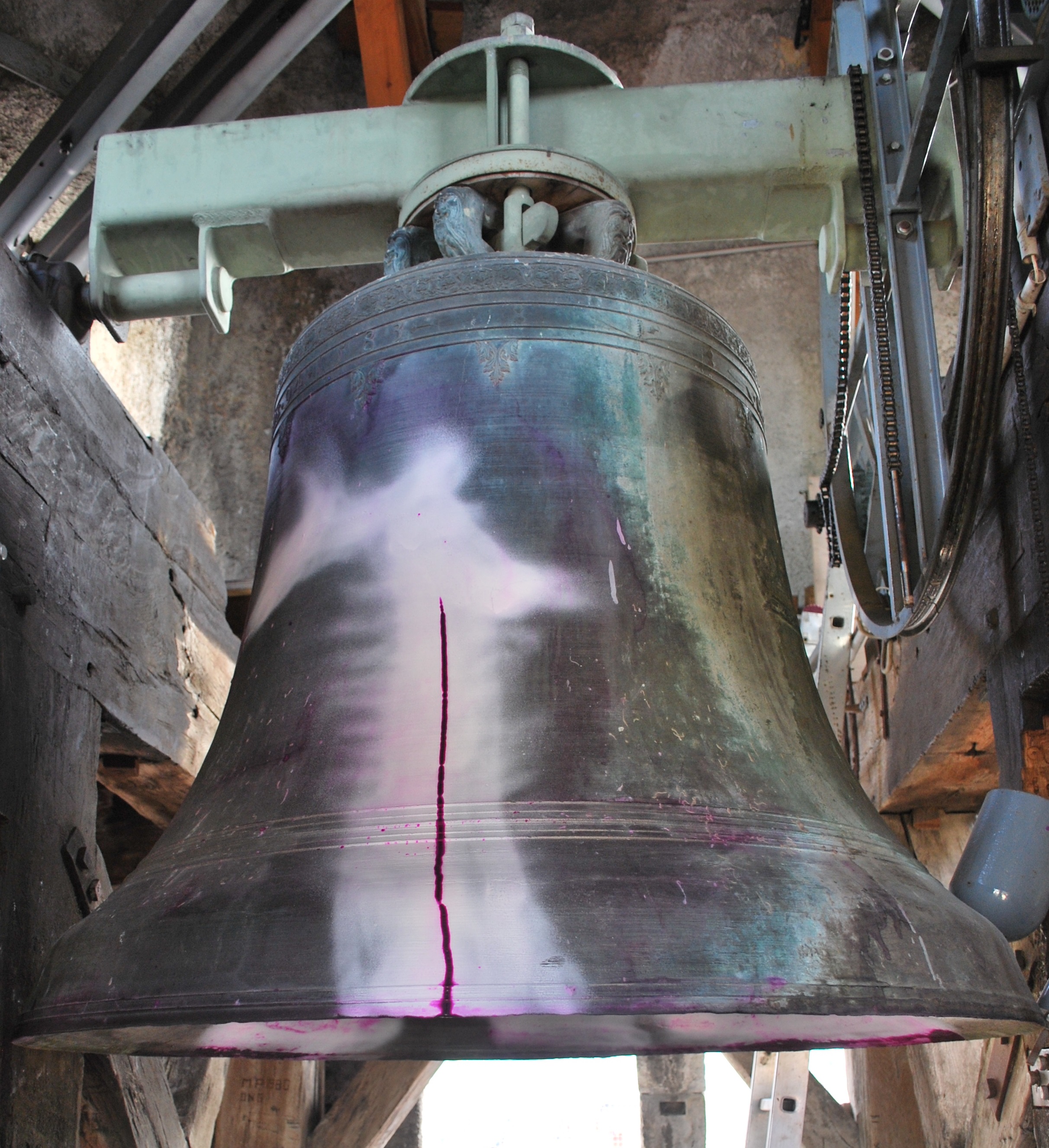The musical fingerprint
No two bells are the same. Their individual features – decorations and inscriptions, shapes and sizes – make each and every bell a unique musical instrument. That’s plain to see, but a bell can be identified even more unmistakably by its sound. It’s not only the strike tone, the partial tones and the intervals that make each bell unique, but even more so the specific vibration behaviour of each of the bell’s partial tones, depending on its material, shape and design.
A bell’s musical fingerprint is captured by means of a procedure that analyses its vibration behaviour based on a sound recording. At the same time, the musical fingerprint can be used to detect if the bell is damaged in any way. The basis for this lies in the specific vibration behaviour of rotationally symmetrical bodies, which is what bells are. In rotationally symmetrical bodies, each special sound-producing shape is dually present, meaning that each partial tone of the bell is produced twice. If the rotational symmetry is ideal, then the eigenfrequencies in question will be identical, meaning that this physical characteristic will not be discernible. Any deviations from rotational symmetry can be identified using appropriate diagnostics of the special frequencies that reveal a difference in tone, which beyond a certain extent are also audible as oscillations in the individual partial tones.
Based on extensive simulations and tests on various bells, it can be clearly identified whether differences in a bell’s tone are caused by inscriptions, decorations, material impurities or distortions – or by damage such as material wear to the striking points, dents or cracks.
The centrepiece in the analysis of the musical fingerprint is a graphic representation, in the form of a radar chart, of the magnitude of the tonal differences in the bell’s most important partial tones. This graphic pattern indicates whether a bell is intact or damaged, and whether an identified flaw is of a critical magnitude or potential. The diagram presented here shows the tonal differences for an ideal bell and for bells that are damaged.





 YouTube - ECC-ProBell
YouTube - ECC-ProBell